서 론
증 례
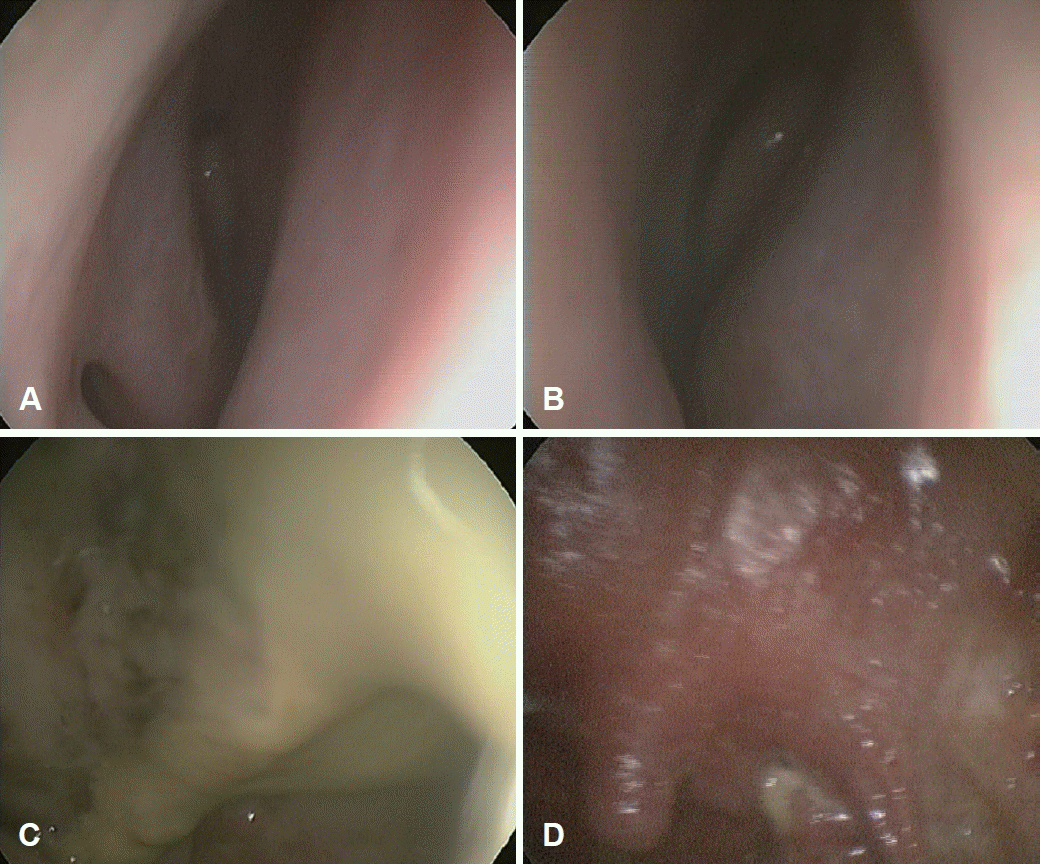 | Fig. 1.Endoscopic findings of nasal cavities, nasopharynx and oropharynx at the patient’s fist visit. A and B: There were no specific findings in both nasal cavities. C: Necrotic swollen mucosa with purulent discharge was found in nasopharynx. D: Oropharynx showed injected mucosa with some exudates. |
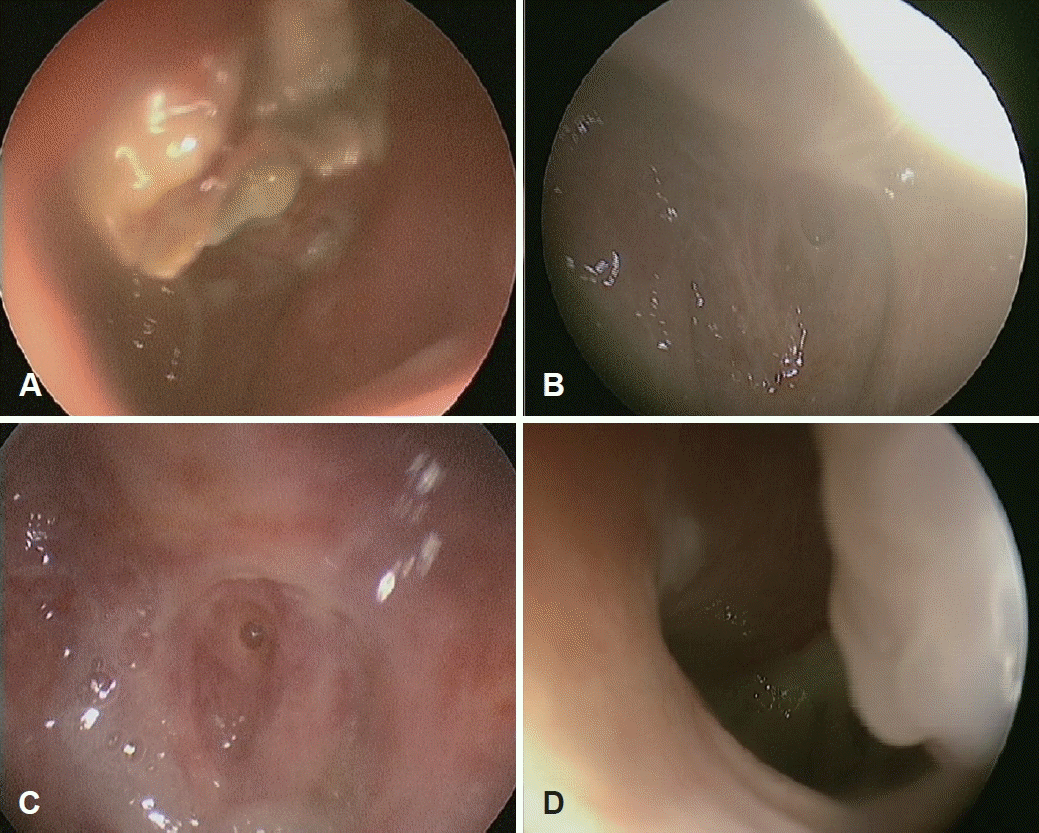 | Fig. 2.Endoscopic findings of nasopharynx at the patient’s serial visits. A: At her second visit, there were some necrotic granulations on the nasopharynx after medication of antibiotics and steroid. B: Inflammation of the nasopharynx was much improved after long term medication of amoxicillin/clavulanate. C: Purulent discharge was found in swollen nasopharynx at her 5th visit. D: Nasopharynx showed swollen mucosa with some exudates before radiation therapy. |
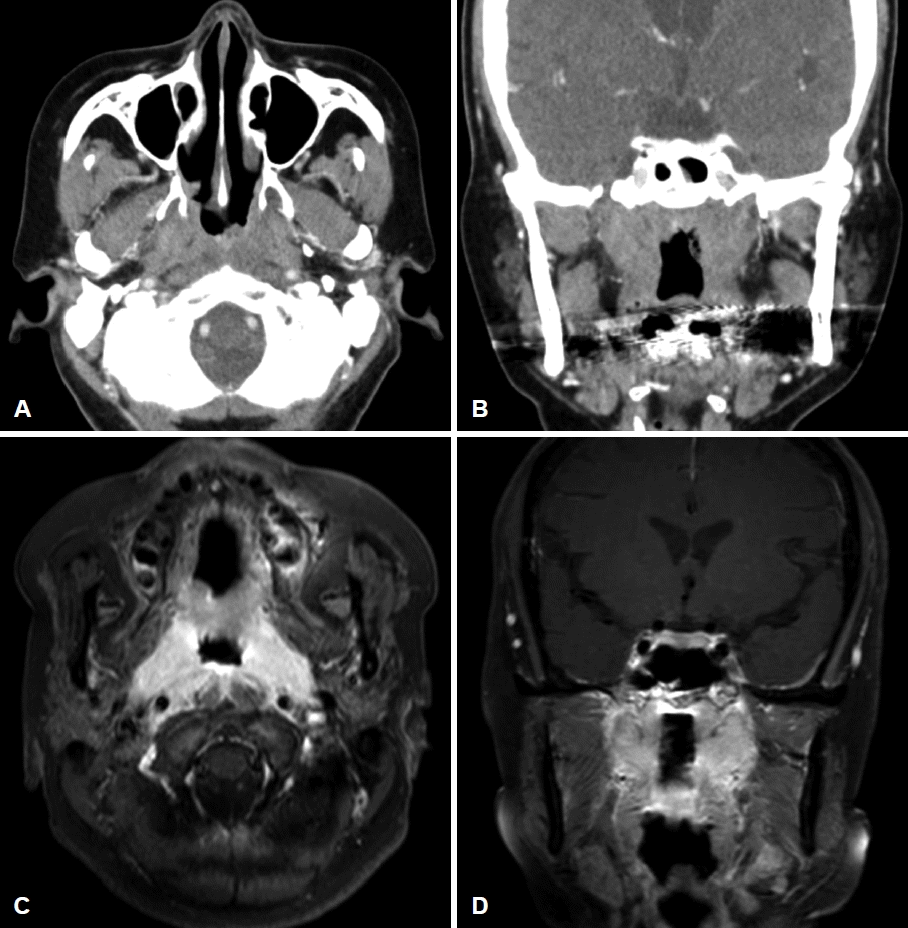 | Fig. 3.CT and MRI images of a 62-year-old female who presented with nasal obstruction and purulent rhinorrhea. A and B: Axial and coronal enhanced paranasal sinus CT demonstrated diffuse infiltrative wall thickening of bilateral nasopharynx and focal invasion of right posterior nasal cavity and both pterygopalatine fossa (PPF). C and D: MRI also demonstrated that diffuse infiltrative enhancing lesions in the nasopharynx involving pharyngeal muscles, preveretbral space, both pterygoid bones, medial part of PPF, and encasement of both distal cervical Internal caroid artery. |
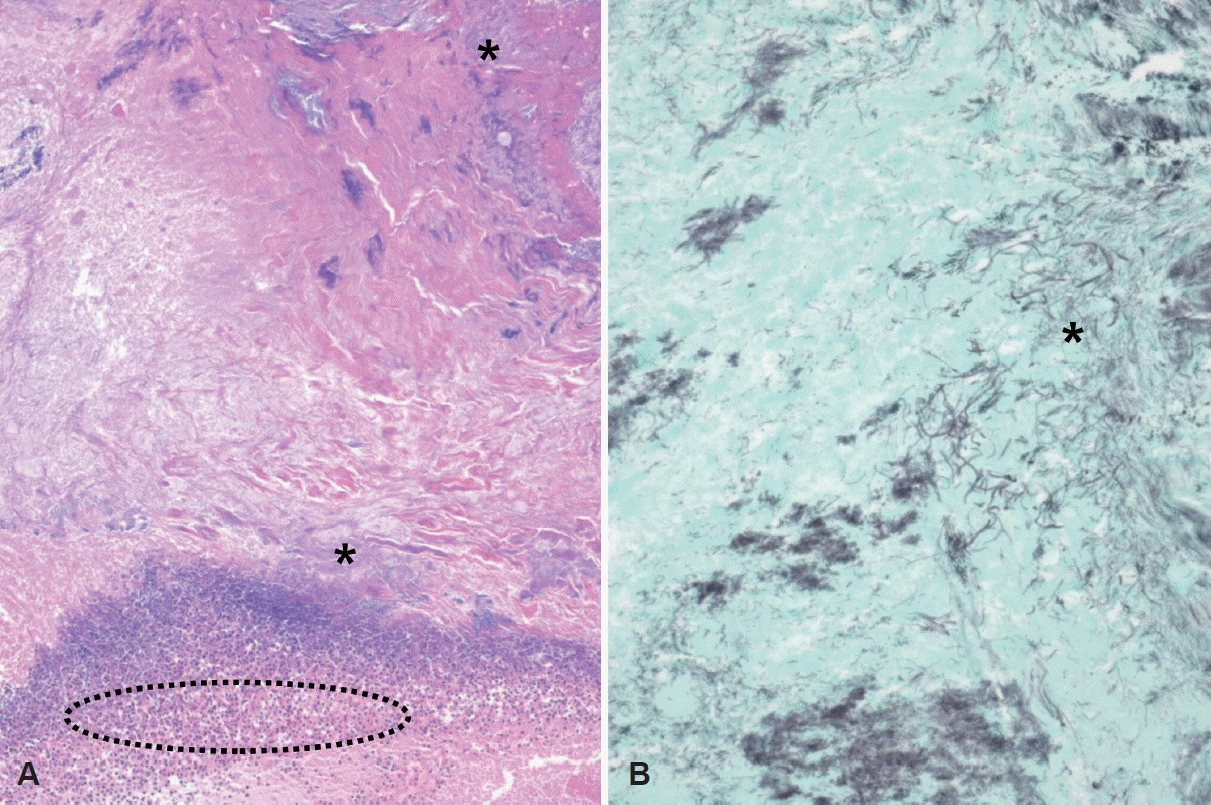 | Fig. 4.Histopathologic findings of actinomycosis. A: Microorganism colonies composed of basophilic radiating filaments (asterisk), which is referred to as sulphur granules, are noted with the neutrophilic infiltration in hematoxylin & eosin staining (dotted circle) (×100). B: Gomori methenamine silver stain highlights thin filamentous bacteria with morphologic features suggestive of Actinomyces species (×400). |
 | Fig. 5.Pathological and immunohistochemical findings. A and B: Oropharynx in anterior pillar area shows atypical lymphoid infiltration in submucosal area (A: dotted circle, hematoxylin & eosin [H&E] staining, ×40), consisting of variable pleomorphic cells with small amount of cytoplasm and irregular and folded nuclear contours (B: H&E staining, ×200). C: These atypical lymphoid cells reveal the diffuse immunoreactivity for CD3 (×200). D: In-situ hybridization for Epstein-Barr virus demonstrates reactivity in most tumor cells (H&E staining, ×200). |
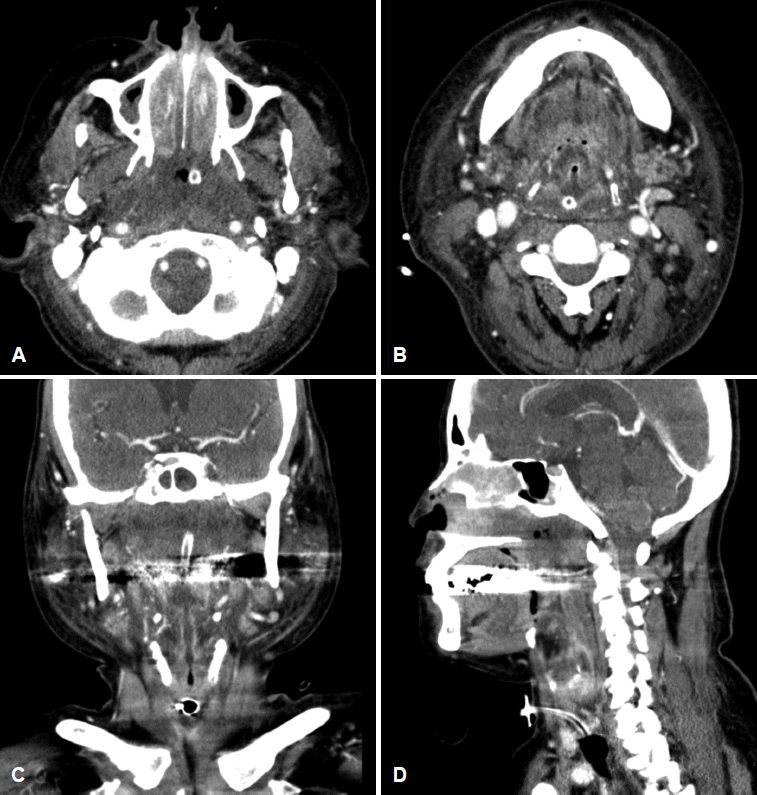 | Fig. 6.Neck CT scan findings when the patient visited emergency room complained dyspnea. As soon as she arrived at emergency room, she had undergone emergency tracheostomy to secure her airway. A and B: Axial CT scans showed that combined severe edema and necrosis of nasopharynx and orophayngeal wall, and associated diffuse severe inflammatory edematous swelling in the larynx. C and D: Coronal CT scans also showed the diffuse upper airway obstruction and deep neck infection around the pharyngeal mucosal space and cellulitis in the face and upper neck without localized abscess formation. |
 | Fig. 7.Endoscopic findings and neck CT scan findings at her latest visit. A: Some secretions were found in nasopharynx. There was not special abnormality of nasopharyngeal mucosa. B and C: Axial and coronal enhanced paranasal sinus CT demonstrated stable residual less enhancing lesion in the nasopharynx and adjacent prevertebral space. Residual nasopharyngeal mucosa was revealed to be inflammatory lesion without tumor cells by endoscopic biopsy. |




 PDF
PDF Citation
Citation Print
Print



 XML Download
XML Download